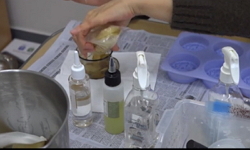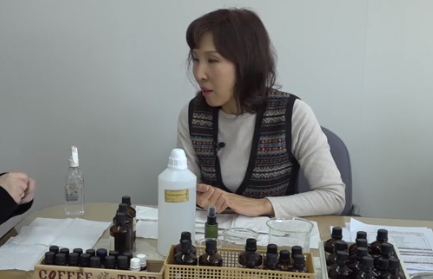Objectives : This study was designed to identify the possibility of aroma oils as the complementary medical goods specially for the effects of aromatheraphy on xerosis cutis. Materials and Methods : The participants were 23 adult patients and all part...
http://chineseinput.net/에서 pinyin(병음)방식으로 중국어를 변환할 수 있습니다.
변환된 중국어를 복사하여 사용하시면 됩니다.
- 中文 을 입력하시려면 zhongwen을 입력하시고 space를누르시면됩니다.
- 北京 을 입력하시려면 beijing을 입력하시고 space를 누르시면 됩니다.

피부건조증 환자에 대한 아로마오일 사용시 스킨 pH.소양증 변화 = The Effects of Aromatherapy on Skin pH and Pruritis in Patients with Xerosis Cutis
한글로보기https://www.riss.kr/link?id=A100884093
-
저자
김은정 ; 유왕근 ; Kim Eun-Jeong ; Yoo Wang-Keun
- 발행기관
- 학술지명
- 권호사항
-
발행연도
2004
-
작성언어
Korean
- 주제어
-
등재정보
KCI등재
-
자료형태
학술저널
-
수록면
55-63(9쪽)
- 제공처
-
0
상세조회 -
0
다운로드
부가정보
다국어 초록 (Multilingual Abstract)
Objectives : This study was designed to identify the possibility of aroma oils as the complementary medical goods specially for the effects of aromatheraphy on xerosis cutis. Materials and Methods : The participants were 23 adult patients and all participants of this study use aroma oils which is known to effect on xerosis cutis. The subjects consist of voluntary patients with xerosis cutis in Seong-So Hospital in Andong Kyoungbuk, Korea. From April 1st to April 30th, 2004 for 4 weeks, the subjects massaged aroma oils on itching parts or the whole body. Aroma oils were Lavender, Losemary, Jasmine and blended drop by drop per 10ml jojoba oil which used a carrier oil. Skin pH was measured with a skin pH meter(Model : HI98110, Se-Chang instruments, made in Portuga. After 4weeks using aroma oils, the participants answered questions about the feeling of satisfaction with aroma oils. Results : Changes in the physiological indices. The mean deviation of skin pH was $5.58{\pm}0.47$ points before using aroma oils and $5.53{\pm}0.45$ points after 2 weeks, no statistical significance was found(p=0.221). MD was $5.36{\pm}0.41$ points after 4 weeks using aroma oils, which was statistically significant decrease of 0.22 points(p=0.001) Changes on the Pruritus Score Scale. A modified scale of the Pruritus Score Scale(Duo, 1987) was used to measure the severity, location, frequency, and the inconveniences of daily life due to prurius. The maximum scale of severity was 4 points, the full marks of location was 2 points, the full marks of frequency was 3 points, the full marks of inconveniences of daily life due to pruritus was 3 points. The scores ranged from 0 to 12, with 12 indicating the most severe pruritus. There was no statistical difference in severity and frequency score at 4 weeks later(severity p=0.097, frequency p=0.633). A statistically significant difference was found in the score of location and the inconveniences of daily life due to pruritus(each p=0.003). Conclusion : Generally speaking, the patient suffering from renal itch is the higher than normal in skin pH levels. that means to show alkaline condition of skin surface. In some case in this study, skin pH levels was rather lower than normal levels when measured actually patients suffering from renal itch by skin pH meter. But in this study post-test skin pH levels decreased, showing the contribution of aromathrapy to acidic condition of skin surface in suffering from renal itch. It seems to be some help to cure a pruritus and also have no ill effects on aroma oils.
동일학술지(권/호) 다른 논문
-
- 대한예방한의학회
- 이동훈
- 2004
- KCI등재
-
- 대한예방한의학회
- 이선동
- 2004
- KCI등재
-
- 대한예방한의학회
- 이선동
- 2004
- KCI등재
-
강활속단탕(羌活續斷湯)이 골세포(骨細胞) 기능(機能)에 미치는 영향(影響)
- 대한예방한의학회
- 이택준
- 2004
- KCI등재




 ScienceON
ScienceON



